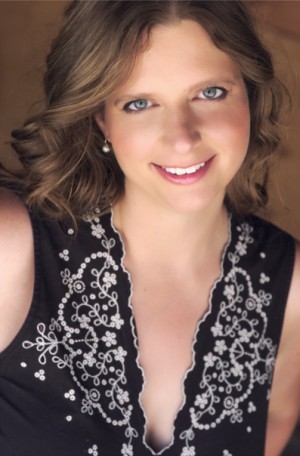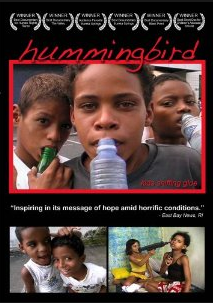
GL: Tell me about Hummingbird.
HM: I am so happy to share my film Hummingbird with you because I love that I was able to bring this little gem of a film into the world. The work of the two organizations I followed working, both of whom work with Brazilian street children and women suffering domestic violence, is deeply transformative but with such simple methods. The groups use the pedagogy of affection and teach people their rights and how to stand up to abuse, and through group therapy they see that they are not alone. Over time they are then able to be the ones to say “no” to the violence they face in their lives. I love letting audiences see through this window into an intimate view of those who may at first seem so foreign, but by the end they feel a deep connection to through the commonality that makes us all human.
GL: How did you become aware of this situation in Brazil?
HM: I had just moved back to Brazil after college and read an article about sex trafficking that horrified and shocked me. At the time there was no media attention to sex trafficking so I had not grown up realizing that it existed. That set me off into a research frenzy, because I just didn’t understand how all the Brazilians I talked to said they knew that it happened all the time. As I read further I found out about The House of Passage in Recife that was working with street girls who were most vulnerable to sex trafficking. A couple of years later I finally did a research trip to visit their work and I also happened upon the Women’s Life Collective. When I left their spaces I was just so moved because I could feel the light in the eyes of the children they were working with. They just shined as if they all had just had little light bulbs go off in their heads with the possibilities of a different life ahead.
GL: Why did you choose to focus your documentary on these two nonprofit organizations?
HM: When I got there, as I mentioned, I was overwhelmed by the excitement of the kids they were working with, it was infectious. On my research trip I met one girl whose story just haunted me for years before I finally got it together to go back and film. Adriana was 17 at the time of my first visit and she told me her story of leaving home at the age of 6 and having a daughter at 11. She found the program when she was pregnant and they really helped raise her child the first few years until she was able to get off the street of her own accord. You have to know that it takes time to get these kids off the street of their own accord if they’ve lived there a long time because they are used to complete freedom and a lack of rules. But slowly she was able to make better life decisions and get on her feet. When I went back to film she was 22 and her daughter was 11, which always sticks with me because that was the same age she had her daughter and found the program. She was doing a great job raising her daughter and you see that they are very close and she’s well cared for. The third element I had to capture was the wisdom of Cecy, one of the women who runs the program. Everything she said was so sage. I wanted to share her wisdom with the world.
GL: What was the most difficult part of making this documentary?
HM: The most difficult part of this film was the editing, as I find with all my films. It is always such a joy to capture the stories when I am spending time with everyone in real life. I love that. But then shaving away all the parts that aren’t absolutely necessary is a chore because you fall in love with so many moments and you want to share it all with people. To make it absolutely the right mix of the different people and time you did get them on camera, and to craft the story in a digestible way where you are taking your audience on just the right journey, is just so challenging. My first editor made two separate films about each program, but I really wanted them in one story that showed how any group can do this work and why they both were moved to do this because their city, Recife, has a huge problem with sex tourism, which heightens the need to help these vulnerable communities.
GL: What do you see as a solution to the problems of domestic abuse you highlight in the film?
 HM: After making the film, I have become a deep advocate for group therapy. I think there is so much that can be learned when you come together in a group with people who are facing similar problems. When you are all alone and too afraid to voice your problems to others, you will feel alone and overwhelmed with your problem. But when you come together and see that what you thought was so shameful and difficult to deal with is something that so many others also are facing, there is a liberation in that. And by having the right mix of working on a mental, physical and spiritual level you can break through the wounds of the past. What I found important was that they also were always incorporating physical movement and a positive sense of touch because so many things get locked in our bodies and we need to unleash the old feelings and also learn to feel comfortable in our bodies after such things occur. I also see this as an effective solution as we look at the mental health issues that are leading to gun violence. If we were able to give this type of support to ALL teenagers, I imagine we could help people who turn to violent acts past whatever is emotionally disturbing them before they get out of control. Right now we have a tendency to just medicate people without real therapy because it is easier, less time consuming (and more profitable for the pharmaceutical companies), but if we worked with group therapy, these individuals may not feel like outcasts who are not understood by anyone in the world and with huge gripes against humanity. It seems that a lot of them are just screaming out to belong and fit in.
HM: After making the film, I have become a deep advocate for group therapy. I think there is so much that can be learned when you come together in a group with people who are facing similar problems. When you are all alone and too afraid to voice your problems to others, you will feel alone and overwhelmed with your problem. But when you come together and see that what you thought was so shameful and difficult to deal with is something that so many others also are facing, there is a liberation in that. And by having the right mix of working on a mental, physical and spiritual level you can break through the wounds of the past. What I found important was that they also were always incorporating physical movement and a positive sense of touch because so many things get locked in our bodies and we need to unleash the old feelings and also learn to feel comfortable in our bodies after such things occur. I also see this as an effective solution as we look at the mental health issues that are leading to gun violence. If we were able to give this type of support to ALL teenagers, I imagine we could help people who turn to violent acts past whatever is emotionally disturbing them before they get out of control. Right now we have a tendency to just medicate people without real therapy because it is easier, less time consuming (and more profitable for the pharmaceutical companies), but if we worked with group therapy, these individuals may not feel like outcasts who are not understood by anyone in the world and with huge gripes against humanity. It seems that a lot of them are just screaming out to belong and fit in.
GL: How did you come up with the title, Hummingbird?
HM: I had to choose this title after Cecy, the leader of the Women’s Life Collective, told me the Japanese fable about the hummingbird. It goes like this: There is a fire in the forest and all the animals are running around going nuts. And then a hummingbird goes to the river and gets a few drops of water and puts it on the fire and then returns to the river and gets more water to put on the fire. As the hummingbird does this, the lion sees the hummingbird and tells it, “Get out of here and protect yourself – like the rest of us.” And the hummingbird says to the lion, “I’m doing my part. And what about you?”
GL: Have things changed for these organizations since the film was released?
HM: Unfortunately I haven’t been back to Recife since I finished filming, so I can’t say much about what is going on there now. I do know that Cecy stepped down from her work. But she always told the workers that they should only work a few years there and then transition to other things because it can be very difficult emotionally. Also they always made sure that the group counselors had their own group therapy check-ins to make sure that they could stay balanced, because they were often hearing and witnessing such difficult life situations. Another piece of her wisdom which I try to remember is that as much as we may want to help others, we also need to stay in balance and make sure we take care of ourselves. I think this is something we may all do well in remembering.
